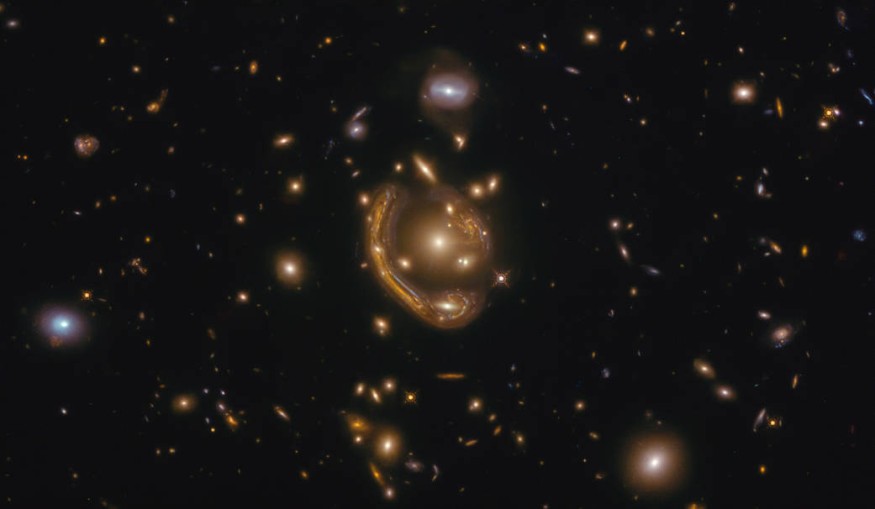In what NASA defines as a liquid disk, otherwise referred to as an Einstein ring, a remote galaxy seen wobbling around a massive star. The space agency defined the entity in question as a 'very unusual occurrence.' The Hubble Space Telescope was able to capture an entity with the popular name of GAL-CLUS-022058s.
The photograph shows a distant galaxy curving across a clustered galaxy, according to NASA. A process known as gravitational lensing induced the phenomenon.

If an object in space, such as the Sun, were too massive, the gravitational influence will be so strong that its mass might distort the space-time fabric and allow light to bend.
For example, it acts in a similar manner to a magnifying glass that bends light through the lens, allowing an item to look near to it.
NASA has called this one a "molten ring" because of its fiery nature.
The space agency said that the light from the galaxies in the center was bent through the curve we see by the galaxy cluster's gravity lying in front of it.
The close-to-exact alignment of the background galaxies with the cluster's central elliptical galaxy, shown in the center of this picture, has distorted and magnified the background galaxy's image into an almost ideal ring.
Further distortions are induced by the gravity of other galaxies in the cluster.
Objects like these are, according to NASA, the best labs in order to research galaxies that are sometimes too small and remote without gravitational lensing to see otherwise.
After offering breathtaking images of the universe for three decades, Hubble will shortly be withdrawn by NASA.
However, the vast update, the James Webb Space Telescope, will be in its place (JWST).
Molten Ring: Einstein Ring Warping Space and Time
For the Hubble Telescope, NASA's observation of the Molten Ring is a huge success when it sees an almost complete replica that confirms Albert Einstein's old hypothesis right. There have been tiny and partial circles before, which do not entirely endorse the hypothesis.
The Einstein Ring is an effect produced by the "gravitational lensing," mechanism that utilizes the power of gravity to draw light through it (and much further) from one point in space to another into it. The new Einstein Ring, called the Molten Ring, took light from the background and twisted it into a curved form, to be seen by the planet Earth in front of them.
NASA's Hubble Telescope correctly timed the shot and made the background galaxy's nearly full alignment with the gravitational lens, revealing an almost perfect ring in the process. Any background illumination behind it also reveals small phenomena of the Einstein Ring and gravitational lensing.
The Hubble Telescope caught a significant Einstein Ring that "magnifies" the galaxy behind it, rendering it available for scientists and researchers on Earth to observe and look closer.
Check out more news and information on Space on Science Times.
© 2026 ScienceTimes.com All rights reserved. Do not reproduce without permission. The window to the world of Science Times.











